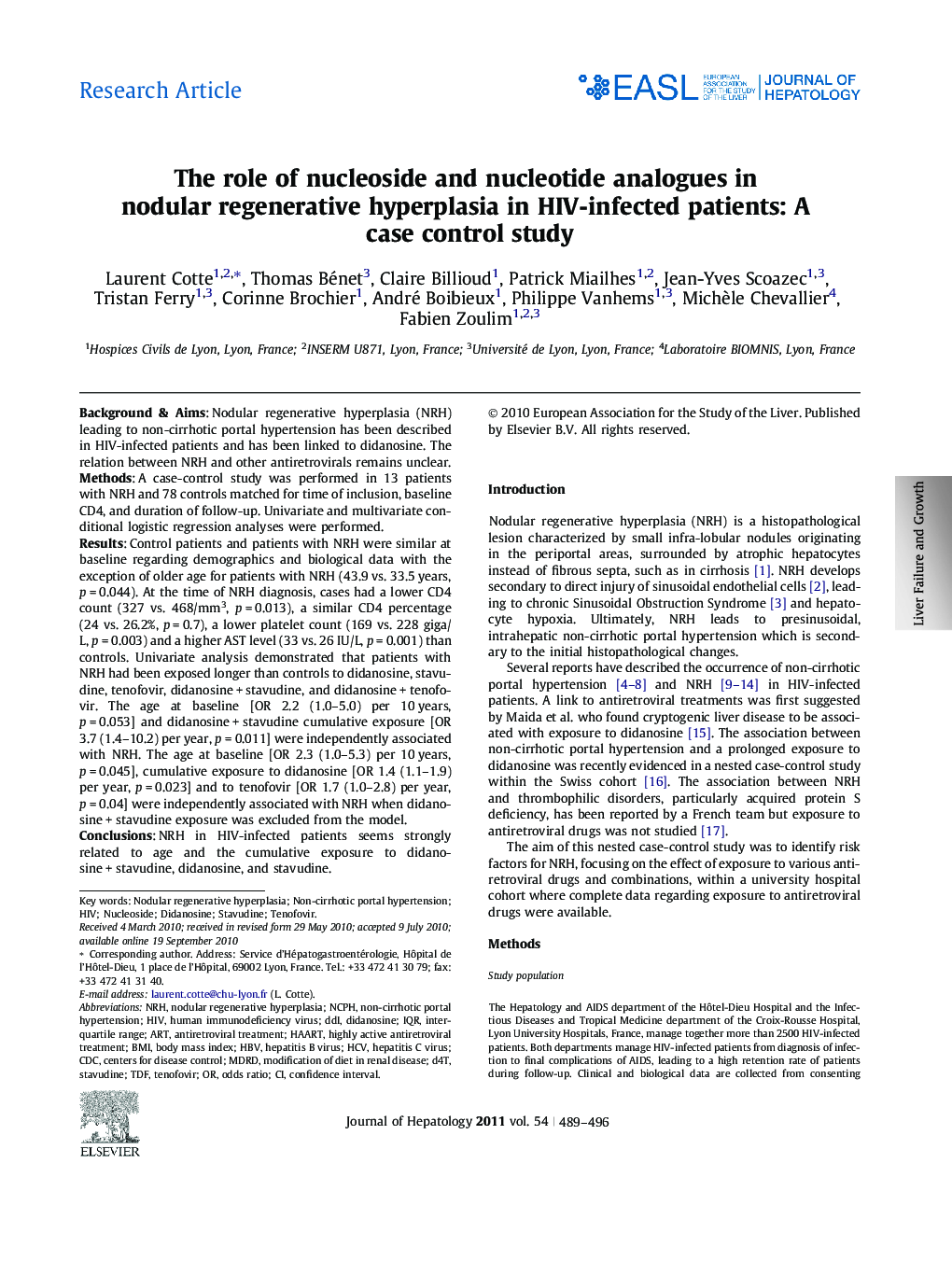| Article ID | Journal | Published Year | Pages | File Type |
|---|---|---|---|---|
| 6106888 | Journal of Hepatology | 2011 | 8 Pages |
Background & AimsNodular regenerative hyperplasia (NRH) leading to non-cirrhotic portal hypertension has been described in HIV-infected patients and has been linked to didanosine. The relation between NRH and other antiretrovirals remains unclear.MethodsA case-control study was performed in 13 patients with NRH and 78 controls matched for time of inclusion, baseline CD4, and duration of follow-up. Univariate and multivariate conditional logistic regression analyses were performed.ResultsControl patients and patients with NRH were similar at baseline regarding demographics and biological data with the exception of older age for patients with NRH (43.9 vs. 33.5 years, p = 0.044). At the time of NRH diagnosis, cases had a lower CD4 count (327 vs. 468/mm3, p = 0.013), a similar CD4 percentage (24 vs. 26.2%, p = 0.7), a lower platelet count (169 vs. 228 giga/L, p = 0.003) and a higher AST level (33 vs. 26 IU/L, p = 0.001) than controls. Univariate analysis demonstrated that patients with NRH had been exposed longer than controls to didanosine, stavudine, tenofovir, didanosine + stavudine, and didanosine + tenofovir. The age at baseline [OR 2.2 (1.0-5.0) per 10 years, p = 0.053] and didanosine + stavudine cumulative exposure [OR 3.7 (1.4-10.2) per year, p = 0.011] were independently associated with NRH. The age at baseline [OR 2.3 (1.0-5.3) per 10 years, p = 0.045], cumulative exposure to didanosine [OR 1.4 (1.1-1.9) per year, p = 0.023] and to tenofovir [OR 1.7 (1.0-2.8) per year, p = 0.04] were independently associated with NRH when didanosine + stavudine exposure was excluded from the model.ConclusionsNRH in HIV-infected patients seems strongly related to age and the cumulative exposure to didanosine + stavudine, didanosine, and stavudine.
